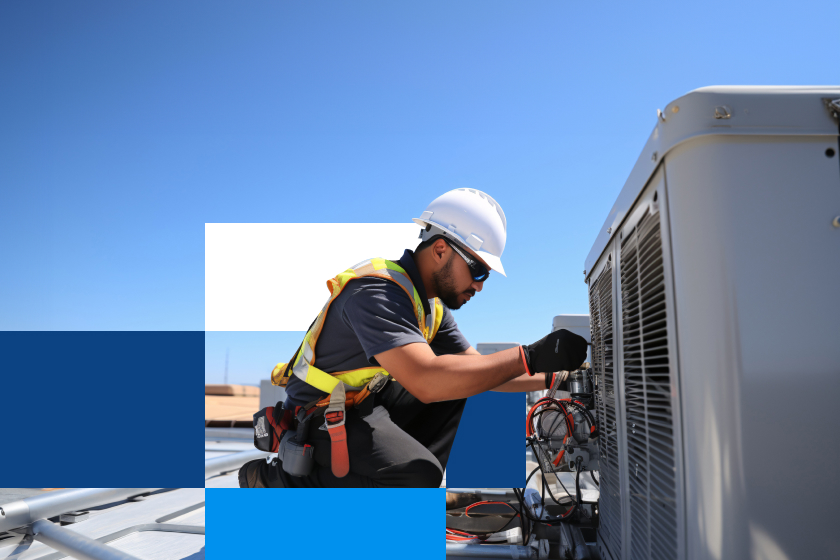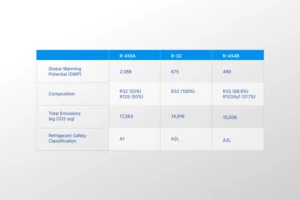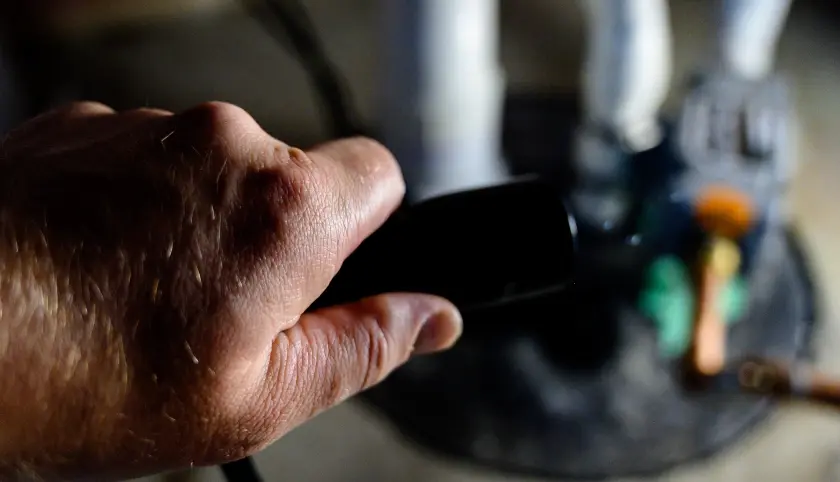
In 2025, the HVAC industry will experience a major transformation with the introduction of new refrigerant changes. The Environment Protection Agency (EPA) has set new guidelines for global warming potential (GPW) limits to make way for more eco-friendly alternatives for air conditioning.
As a result, high-GWP refrigerants like R-410A are being phased out. Instead, residential systems will adopt refrigerants such as R-32 or R-454B, both of which have significantly lower impact on the environment.
Although this move is designed to reduce greenhouse gas emissions, it also brings challenges and opportunities for homeowners across the U.S. How will these changes affect your current HVAC system? Will you need to upgrade or replace parts to stay compliant? What can you do to maintain efficiency while adapting to this transition?
Here, in this blog, you will get answers to all your questions and practical tips to keep your home efficient, compliant, and climate-conscious.
The EPA is rolling out new refrigerant regulations under the American Innovation and Manufacturing (AIM) Act. The rules will bring significant changes to the HVAC industry as it aims to reduce the use of hydrofluorocarbons (HFCs), which are high-global-warming-potential refrigerants like R-410A.
Starting January 1, 2025, manufacturing or importing products using refrigerants with a GWP of 700 or higher will no longer be allowed in specified sectors. There is a grace period: systems using these refrigerants can still be installed until January 1, 2026, as long as their components are produced or imported before the 2025 deadline.
Key Highlights of the Regulations:
Refrigerant is the lifeblood of your HVAC system, absorbing and releasing heat as it transitions between low-pressure gas and high-pressure liquid. R22 was the standard refrigerant for decades, but R-410A replaced it in the ’90s because of its lower ozone depletion potential.
Now, with R-410A being phased out, the industry is shifting to new, greener refrigerants like R-32 and R-454B. These A2L-class options offer lower global warming potential, making them a better choice for the environment while maintaining the cooling efficiency you expect.

The 2025 refrigerant changes are a step toward more environmentally friendly and energy-efficient HVAC solutions. The use of low-GWP refrigerants like R-454B and R32 brings the following environmental benefits:
With the new refrigerant changes rolling out, if you’re wondering how they will impact your older HVAC system, you’re not alone. Let’s break down what this phaseout means for homeowners like you.
With regulatory updates, new refrigerants and upgraded components are a must to meet the standards, and that can influence market prices. So, expect 2025-compliant systems to cost a bit more since they are built with advanced technology to have a lower impact on the environment.
There is a limited window to replace your old HVAC system before new regulations take full effect. If you hold off on replacing your HVAC system, you might end up paying a lot more. After December 31, 2024, new systems must comply with EPA standards and could cost up to 20% to 30% more in 2025. Hence, acting now is a smart move.
Now that the 2025 EPA refrigerant changes are already underway, here are some easy steps to ensure your home is fully prepared for the transition.

Unexpected HVAC issues? No worries! Our warranty plans ensure you are covered for repairs and replacements. Have questions? Call us at
800-670-8931 today!
With the new refrigerant changes, upgrading to R-32 or R-454B ensures you stay compliant with the new regulations. Most importantly, it is a step towards building an energy-efficient, eco-friendly, and future-ready home. While the upfront costs might be higher, the long-term savings and positive environmental impact make this upgrade a wise decision for any homeowner.

Don’t wait until it’s too late! Check out our current plans and get your free quote.

Real Estate
You’ve done your research, you’ve saved up, and now you’re finally able to consider whether you’re ready to buy a home. Since most people believe they’ll eventually become a homeowner,..

Household Tips
Sump pumps are the key to setting your home up for success when it comes to water entering the home. This simple mechanism could mean all the difference between saving..

Home Warranty
When people think of home warranties, they usually think of major appliances. However, the right home warranty plan can also cover all the major systems that keep your house running...